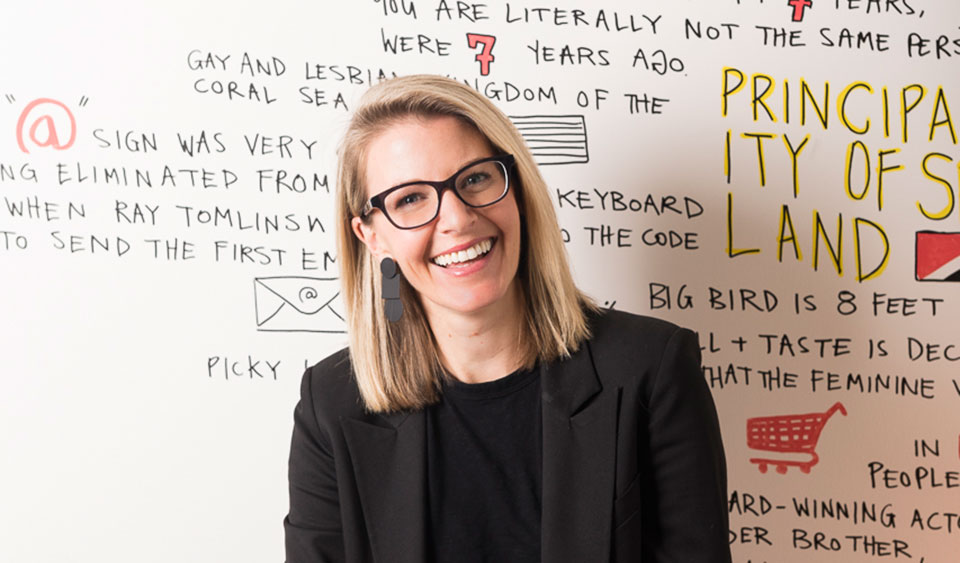How to cultivate a growth mindset in your team

The word “pivot” has become one of the most overused buzzwords of the pandemic. We are all being forced to try new ways of doing things, both personally and professionally. (Just last week I was dyeing my Mum’s hair!) In a business context, we are all navigating new territory and are bound to experience some failures along the way. But in many cases, it’s not the failures themselves, but more importantly how we view those failures, that determines whether we bounce back.
Professor Carol Dweck identified two different mindsets that have a profound impact on our relationship with success and failure: a fixed mindset and a growth mindset.
In a nutshell, people with a fixed mindset inherently believe that their character, abilities, and intelligence are static and cannot be changed. While those with a growth mindset believe that these aspects can be cultivated over time through dedication and effort.
This is important because Professor Dweck says that having a growth mindset can create a love of learning and greater resilience. While a fixed mindset can see our self-esteem plummet in the face of failure.
The good news is that our mindsets are not set in stone. People can have a growth mindset at certain times and a fixed mindset at others. Below are three strategies that you can adopt to help cultivate a growth mindset in your team.
- Set learning-based objectives
The types of objectives that you set for your team influence their behaviours as well as their mindset. Performance-based goals and objectives, such as revenue targets and growth figures, can encourage more of a fixed-mindset. This is because there is little flex to them, meaning you either achieve them or you don’t. Or put another way, you either succeed or fail. Therefore, they can promote more risk averse behaviours in an attempt to avoid failure.On the other hand, learning-based objectives can encourage a team to adopt a growth-mindset. With these types of objectives, the team is more likely to explore more risky solutions, as they will see failure as a learning opportunity.
Therefore, think about setting learning-based goals, particularly where you are venturing into new territory or are looking for more disruptive-type solutions.
- Give signals that it’s OK to fail
Risk aversion is a typical behaviour of someone who is stuck in a fixed mindset. This is because they are focused on trying to prove themselves.Another way to help your team overcome a fixed mindset, is by providing clear and consistent signals that it’s OK for them to fail. The Finnish mobile gaming company Supercell embraced this idea by introducing a ‘Cheers to Failure’ champagne celebration. As they state on their website “We’d like to think that every failure is a unique opportunity to learn, and every lesson will ultimately make us better at what we do”. This celebration signals to the rest of the team that failure is not only OK, but something to be celebrated. So, think about ways that you can send permission to your team that it’s OK to fail.
- Give people the right amount of challenge
Professor Dweck’s research shows that people with a growth mindset are much more likely to embrace challenges. While those with a fixed mindset tend to avoid challenges and give up more quickly. While we cannot always avoid obstacles, we can make sure that our team are appropriately challenged on the projects that we assign to them.Research shows there is a U-shaped relationship between challenge and performance, meaning that performance is optimised where there is a moderate level of challenge. That is, where you hit the ‘sweet spot’ of not too easy or conversely too difficult.
Therefore, when you are allocating team members to projects, look for people who will be stretched, but won’t be outside their competency. Because where tasks are considered too challenging, a fixed mindset might set in.
Unfortunately, we cannot avoid failures. However, by adopting the above three strategies, you will help your team recover from them more quickly. And lucky for me, my Mum has been very forgiving of my hair dyeing failures and we are learning as we go. We all are.
Written by Zoe Aitken.
Bring the best of the CEOWORLD magazine's global journalism to audiences in the United States and around the world. - Add CEOWORLD magazine to your Google News feed.
Follow CEOWORLD magazine headlines on: Google News, LinkedIn, Twitter, and Facebook.
Copyright 2025 The CEOWORLD magazine. All rights reserved. This material (and any extract from it) must not be copied, redistributed or placed on any website, without CEOWORLD magazine' prior written consent. For media queries, please contact: info@ceoworld.biz








